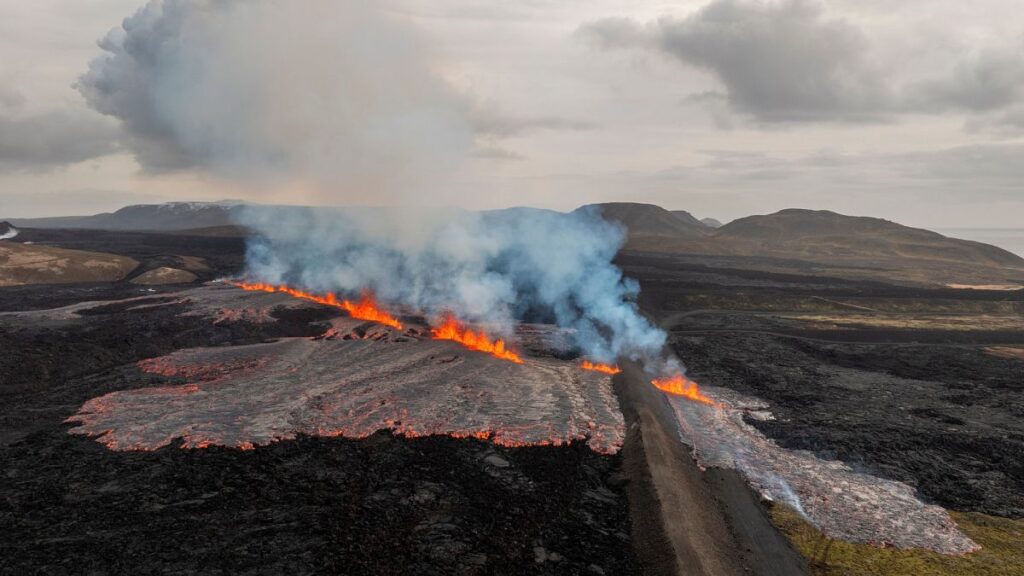Flames and smoke shot through the air as the volcanic fissure opened near the town of Grindavik.
A volcano began erupting in southwestern Iceland on Tuesday as tourists at the nearby Blue Lagoon and residents of local communities were evacuated.
Flames and smoke shot through the air as a fissure opened near the town of Grindavík, about 50 kilometres southwest of the capital, Reykjavik, where roughly 40 homes have been evacuated, according to national broadcaster RUV.
Residents mostly vacated the community, located on the Reykjanes Peninsula, in 2023 when the volcano came to life after lying dormant for 800 years.
A swarm of small earthquakes began at around 6:30am local time on 1 April, similar to previous eruptions. The eruption just north of the protective barrier near Grindavík then began at 9:45am, according to Iceland’s Met Office (IMO).
Warning sirens started to sound when the orange-red fissure reached the town’s defence walls at around 10am. IMO has said that the fissure is now around 700 metres long, and “it cannot be ruled out that it may continue to open further south.”
Iceland sits above a volcanic hotspot in the North Atlantic and, on average, sees one eruption every four to five years.
Experts have warned that volcanic activity in the Reykjanes peninsula has entered a new era, with the frequency of eruptions having surged. This is the 11th such event to have occurred since 2021, when this new eruption period began.
Iceland’s Blue Lagoon closed until further notice
The Blue Lagoon is one of Iceland’s biggest tourist attractions. Authorities evacuated guests from the geothermal spa, moving them to nearby hotels when it became clear an eruption was imminent.
It will remain closed through 1 April, and the situation will be assessed later on, according to a message posted on the Blue Lagoon’s website. All guests with bookings during this temporary closure will be contacted.
A ‘red alert’ has been issued for the town of Grindavík, and the area around it is closed off. It will remain closed until further notice.
Travellers have been asked to respect the closures and instructions from local authorities and to stay away while conditions are being assessed, according to Safe Travel Iceland.
During previous eruptions, tourists and locals keen to see the majestic event first-hand have been repeatedly warned to stay away from Reykjanes.
Though it is yet to be updated for the most recent eruption, the UK’s FCDO says eruptions and earthquakes are common in Iceland due to the country’s nature geography.
“In the event of an eruption or wider seismic activity follow the latest advice issued by the authorities,” it says. It adds that travellers should regularly check for alerts and advice from the Icelandic Tourism Board, Icelandic Met Office, Safe Travel Iceland and the Almannavarnir Facebook Page.
The effects of the eruption are currently localised and have not caused any problems for the nearby Keflavík airport- Iceland’s main international airport.
Though ash clouds from previous volcanic eruptions in Iceland have had disrupted international air travel, this one is not expected to do so.
Read the full article here

